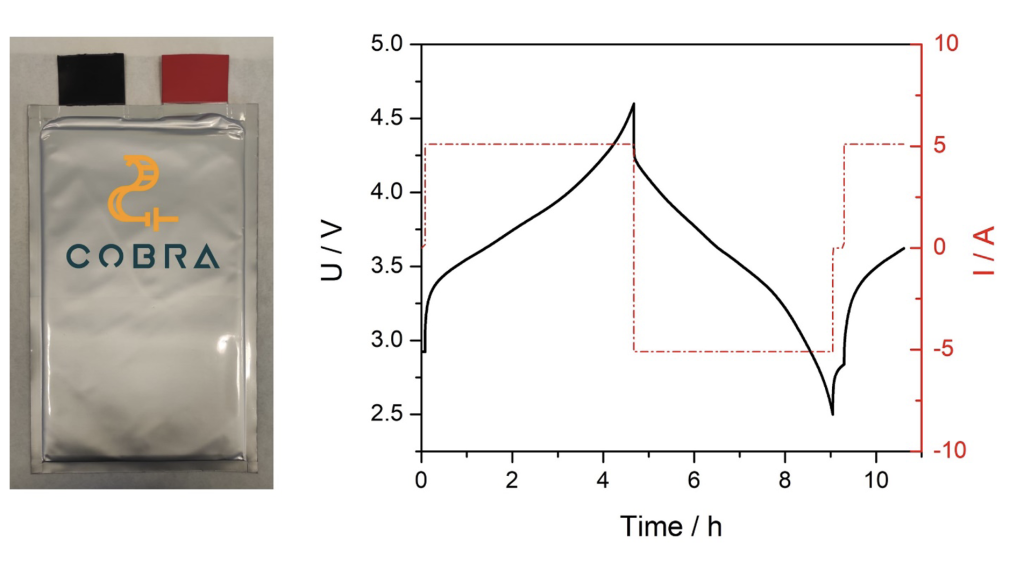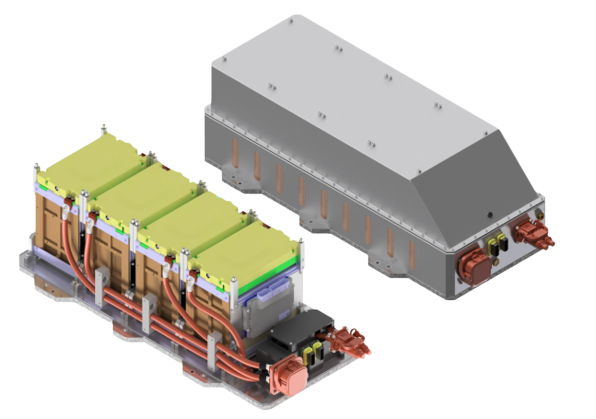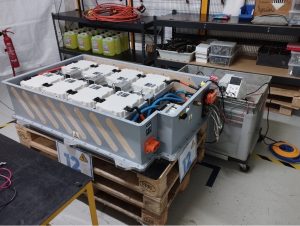An update on COBRA's materials - June 2023
COBRA’s materials, including the Co-free cathode, anode composite, and liquid electrolyte with flame retardant additives or ionic liquids, have been thoroughly benchmarked and characterised for the upscale of the final pouch cells intended for automotive applications [1].
The chosen materials are:
- an Al-doped Li-rich LNMO, which delivers a high discharge capacity of 160 mAhg-1 at C/3 and maintains a stable discharge voltage during battery cycling [2,3],
- an anode composite comprising 10.2 wt.% of silicon obtained from waste stream recycling, and commercial graphite, providing a capacity of 438 mAhg-1 at 3C, and
- a carbonate-based electrolyte with additives and anodic stability of ≥ 4.8 V vs Li/Li+.
The performance of the complete cell has been optimised at the coin cell level, primarily based on the electrode’s capacity ratio and operational voltage window. These specifications have been transferred to large-format pouch cells, using thinner current collectors for electrode fabrication and an improved cell formation process. The scaling-up process involved synthesising 120 Kg of the cathode, 5 kg of silicon, and 120 L of liquid electrolyte, to fabricate a minimum of 200 pouch cells with a capacity of ≤ 30 Ah, which are necessary for assembling the COBRA battery pack(s). These cells will undergo ageing and sensor testing, as well as abuse testing to assess the system’s safety. Currently, the cells are in the fabrication stage.
Co-free prototype pouch cell (26 Ah) and its characteristic charge/discharge profile
Final battery pack design expected to be completed end of 2023
The next-generation battery pack incorporates a novel Battery Management System (BMS) that integrates wireless communications within the battery system, new sensors, and advanced algorithms. The communication link relies on optical signals, making it immune to electromagnetic interference. At the cell level, a set of smart sensors measures temperature, swelling (strain gauge), voltage, and impedance (EIS), while also performing passive balancing. At the module level, a pressure sensor detects venting episodes. Additionally, a laser-based gas sensor located at the battery pack level detects any gas formation within the pack. These innovative developments generate data that is utilised by a set of advanced models (physics-based) to optimise battery operation. An algorithm based on EIS calculates the core temperature of the Co-free cells, while a thermal state observer estimates the temperature distribution of the cells. Combined, these measurements enable a charge management control to compute the optimal charging profile, minimising degradation effects such as lithium plating. Enhanced equivalent circuit models with physics-informed parameters are employed at the BMS level to improve the accuracy of State of Charge (SoC) estimation. The pressure and gas sensors provide early alerts and help prevent thermal runaway events. All these systems operate on a decentralized BMS, which can be used in electric vehicles and grid-connected applications during the second life of the battery, both in a battery pack and single module configuration, thanks to its modular and scalable nature. The battery pack is constructed using green and recycled materials (such as pre-treated wood and aluminium) that are fire-resistant, reducing the weight and environmental impact of the battery system.
If you’d like further details on the latest developments in COBRA, or want to reach out to one of the partners, contact cobra@baxcompany.com or visit our Twitter and LinkedIn channels.






